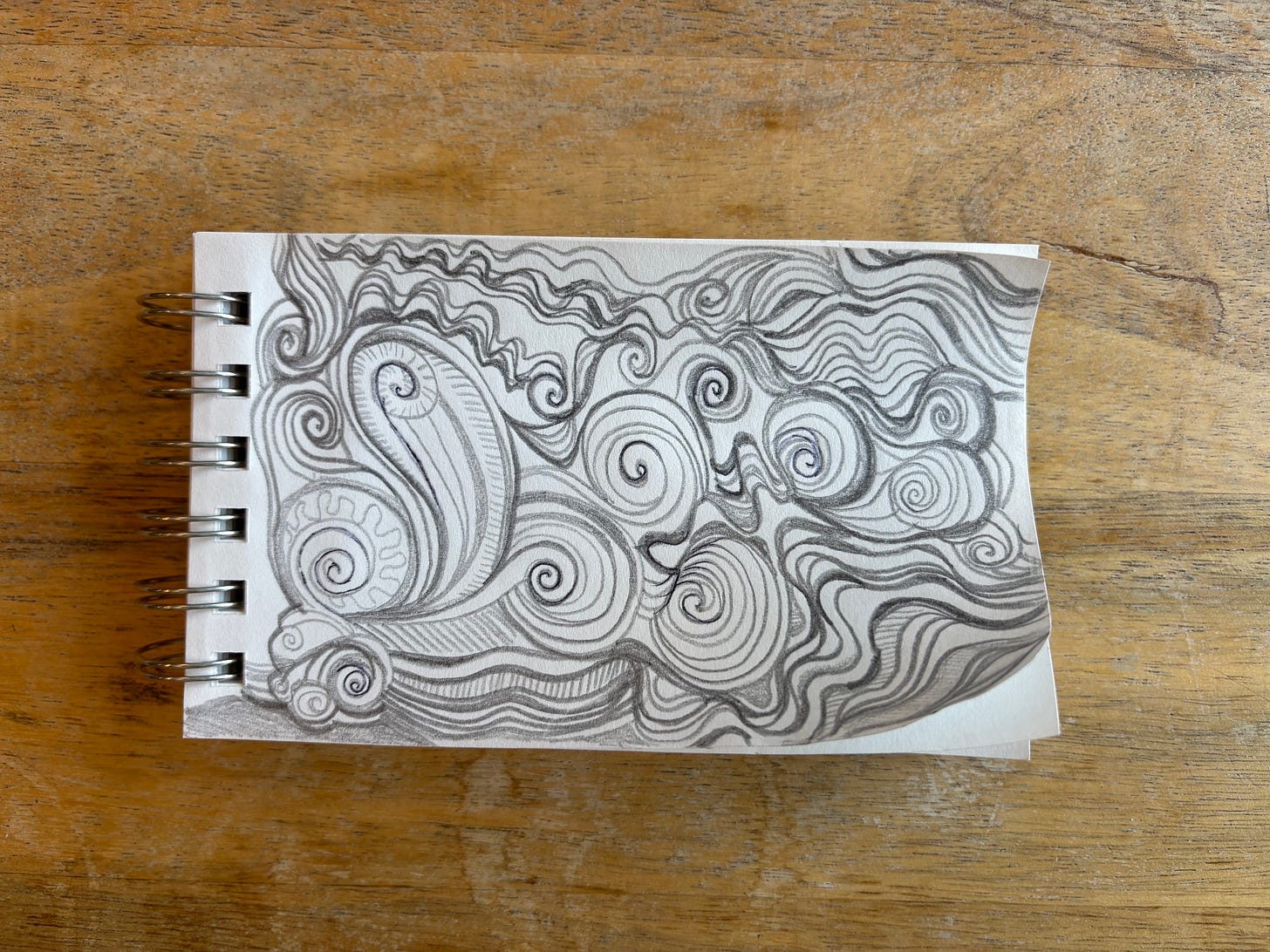A meditation on vibe coding
What if software were a sketchbook? A meditation on coding as craft, process as practice, and the creative potential of working with machines.
Emily Manges is part of AIR’s Cohort Zero, a group of artists and builders helping us define what a design-led AI incubator could be. Over the course of the program, Emily brought rigor, intuition, and a multidisciplinary lens to her work, blending health data and spiritual systems into something wholly original.
Below, she shares a meditation on “vibe coding,” a mode of working that’s less about efficiency, more about developing your intuition. It’s an invitation to treat software like sculpture, and the build process as its own kind of art form.
As we speak, my agent is whirring. I usually have one to three minutes between each iteration cycle. Sometimes I watch it work, trying to parse the decisions it’s making, how it structures things, what it debates internally. Other times, I go full hands-off, letting a ~~higher power~~ take the wheel.
My journey with vibe coding started with a simple React website. Now, it’s evolved into a full Swift MVP. Nearly a thousand prompts later, I’m only just starting to get the hang of it.
I’ll be the first to admit: I’m not the most efficient vibe coder. I’ve prioritized learning over speed, process over polish.
Freed from corporate baggage and habits picked up under past middle-management overlords, and importantly somewhat confined to my own solo, my coding practice has developed more like an artistic discipline than a deployable skillset. While engineers certainly develop habits and methods of their own, vibe coding often happens in isolation. This solitude breeds its own strange rhythms. No sprint planning. No code reviews. Just you and the chatbox, finding a groove together.
Could I get a job as an engineer? Probably not.
When I worked in a curatorial department at MoMA, we would go to great lengths to understand an artist’s working methods. There is no efficient—or even correct—way to make art. Some artists are explicit about their process, others require art historians to sift through attics full of ephemera to untangle the threads. Painter’s sketches become evidence of process, the scaffolding through which a work is made real. Think of Agnes Martin’s pencil grids beneath her paintings: faint, careful lines that reveal how meditation becomes mark-making. In art, process unlocks the uncanny and is often just as sacred as the result.
As the cost of creation drops to zero, software has the potential to become a truly expressive medium. The duo Danger Testing invites us to think of software this way, “dropping apps like songs,” with ephemerality as the point. Apps that exist for a moment, make a statement, then disappear, like performance art in digital form.
So if software is increasingly a creative medium, I challenge vibe coders and engineers alike to develop their own systems and processes. Yes, this might make things slower, messier, less “functional” in the short term, but over time, it can stretch our imagination for what software can be beyond pure utility. Maybe we’ll see apps that change based on your mood, or software that evolves like a living thing rather than shipping as a static products.
I meet a lot of vibe coders, myself included, who feel nervous or even a little ashamed to show their code to a bonafide engineer. It’s probably messy. “Spaghetti code,” as my friend Pedro calls it. We need a vibe-shift here.
If you are doing this for fun, embrace the mess. Experiment with your own processes. You’re in the darkroom. Let the image emerge.
Additional reading
Serious and unserious vibe coding resources






hell yeah, emily!!!
The difference between writing and coding:
It’s more fun to write code than to read code.
It’s more fun to read writing than to write.